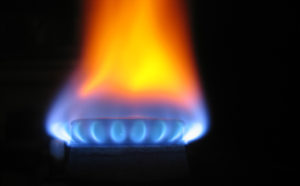 Natural gas fell on Friday to register a sizeable weekly loss after EIA data showed a day earlier a larger-than-expected inventory build, also the first for the season, while most of the US continued to enjoy mild weather.
Natural gas fell on Friday to register a sizeable weekly loss after EIA data showed a day earlier a larger-than-expected inventory build, also the first for the season, while most of the US continued to enjoy mild weather.
Natural gas for delivery in May slid 1.8% on Friday to settle the week nearly 6% lower at $2.639 per mBtu. The contract held in a weekly range between Tuesdays high of $2.833 and Fridays low at $2.616. Prices rose 1.7% the previous week.
The energy source continued to sell off on Thursday after the Energy Information Administration reported that US natural gas stockpiles rose by 12 billion cubic feet in the week ended March 20th, exceeding analysts’s median estimate of a build of 6-9 bcf. The five-year average withdrawal for the period is 19 billion cubic feet, while stockpiles slid by 56 bcf a year ago.
Total gas held in US storage hubs amounted to 1.479 trillion cubic feet, narrowing a deficit to the five-year average inventories of 1.673 trillion to 11.6% from 13.3% a week earlier. The surplus over year-ago stockpile levels expanded to 63.6% from 52.8% last week.
Widespread mild weather across the US further weighed on sentiment, although losses were limited as a series of cold blasts over the North are expected to continue to spill cold Canadian air over the north-eastern US through mid-April, inducing periods of stronger heating demand.
NatGasWeather.com reported on Friday that natural gas consumption in the US will be low-moderate through April 2nd, and locally high this weekend, with a warmer weather trend for the southern US over the following seven days.
Under the spotlight were weather developments for the first two weeks of April, with the latter remaining unclear on how much cold Canadian air could spill into the north-eastern US.
As for the more immediate manner, the latest in a series of cold blasts is sweeping across the eastern US, including deep into the Southeast, pushing temperatures to 10-20 degrees below average through Sunday and inducing stronger local heating demand. The core of the cold front will be over the Great Lakes and Northeast, NatGasWeather.com said, sending overnight lows in the teens and 20s, and single digits near the border.
The western US will enjoy warm weather this weekend, while Texas experiences highs in the 80s and 90s, driving early season cooling demand. A reinforcing cool blast will hit the Northeast on Sunday into Monday, followed by a warm-up through mid-week.
However, Canadian systems will be quick to return afterwards, carrying rain, snow and below-normal temperatures. The country’s southern and central regions will be slightly warmer than usual during the first week of April, while the West is divided into a warmer lower half and a cooler Northwest.
Next week’s inventory report, due on April 2nd, may reflect a near-average or slightly thinner inventory decline as widespread seasonal and warmer weather dominated the majority of the country this week, while the north-eastern US saw a cold break mid-week. The five-year average withdrawal for the week ending March 27th is -22 bcf, while gas in storage declined by 71 bcf a year ago.
The following report, due on April 9th, will likely bring a small inventory build instead of an average decline as widespread mild weather persists. The five-year average inventory drop for the seven days ended April 3rd is -2 billion cubic feet, while stockpiles declined by 8 bcf during the comparable period a year earlier.
Readings
According to AccuWeather.com, New York will see temperatures peak at 39-45 degrees on March 29-30th, compared to the average 39-54, before establishing in the low-mid 50s afterwards. Readings in Chicago will max out at 35 degrees on March 28th, 18 below usual, but will hit the 50s and the low 60s over the following four days.
Down South, highs in Houston will be in the low 80s through April 3rd, above the average 76, before falling to the low-mid 70s over the following week. On the West coast, readings in Los Angeles today will max out at 83 degrees on Saturday, 12 above usual, followed by a slight cooling to the upper 70s through April 2nd.
Pivot points
According to Binary Tribune’s daily analysis for Monday, May natural gas futures’ central pivot point stands at $2.651. In case the contract penetrates the first resistance level at $2.685 per million British thermal units, it will encounter next resistance at $2.732. If breached, upside movement may attempt to advance to $2.766 per mBtu.
If the energy source drops below its S1 level at $2.604 per mBtu, it will next see support at $2.570. If the second key support zone is breached, the power-station fuel’s downward movement may extend to $2.523 per mBtu.
In weekly terms, the central pivot point is at $2.696. The three key resistance levels are as follows: R1 – $2.776, R2 – $2.913, R3 – $2.993. The three key support levels are: S1 – $2.559, S2 – $2.479, S3 – $2.342.





